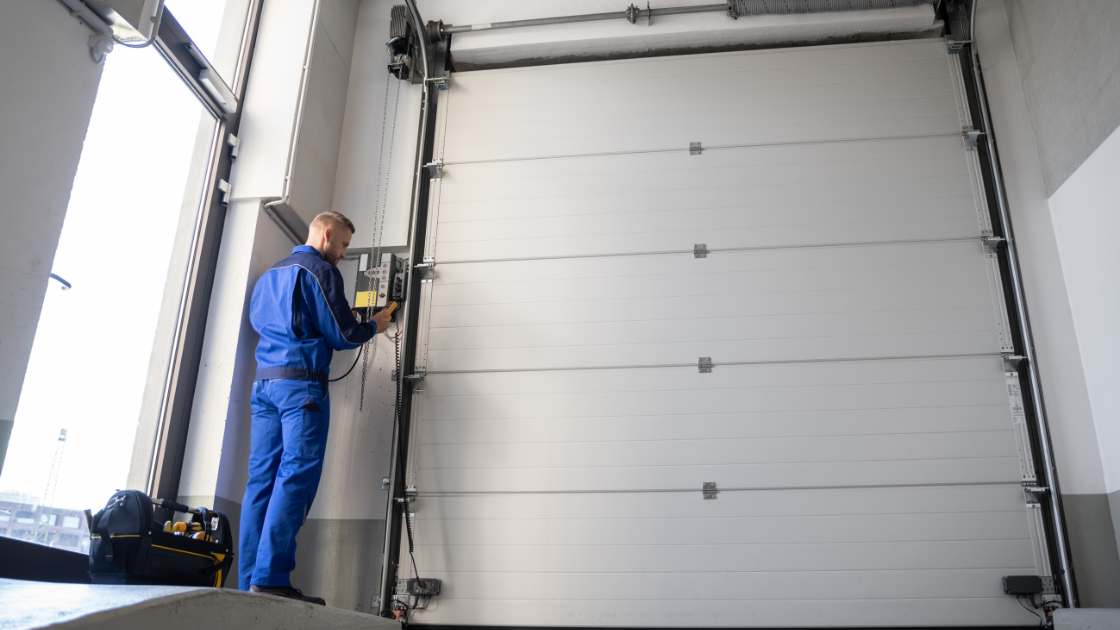
How to Replace Garage Door Springs: A Step-by-Step Guide
Garage door springs play a crucial role in the smooth operation of your garage door. They help counterbalance the door’s weight, making it easier to open and close. Over time, these springs can wear out, break, or lose tension, requiring replacement. While replacing garage door springs can be a complex and potentially dangerous task, it can be done safely with the right tools, preparation, and attention to detail. This guide will walk you through the process of replacing garage door springs step-by-step.
Why Garage Door Springs Need Replacement
Garage door springs wear out due to repeated use over time. Springs are rated for a certain number of cycles (one cycle being one opening and closing of the door). Once the springs lose their tension or snap entirely, the door will become heavy, hard to operate, or won’t open at all.
There are two types of garage door springs:
Torsion Springs: These are mounted above the door and twist to lift the door. They are under high tension and can be dangerous to handle.
Extension Springs: These are located on each side of the door, stretching when the door is closed and contracting when the door opens.
Both types require careful handling, but torsion springs are typically more hazardous due to their high tension.
Signs You Need to Replace Garage Door Springs
- The door won’t open or close properly: If the door feels unusually heavy or is hard to lift, it could indicate spring failure.
- Visible damage: If you see a broken or stretched spring, it’s time for a replacement.
- Unusual noises: A loud popping or snapping sound could mean the springs are close to breaking.
Tools You’ll Need:
- New garage door springs (make sure they match your door’s specifications)
- Wrench set
- Clamps
- Safety glasses and gloves
- Ladder
- Socket wrench with a long extension (for torsion springs)
- Torsion spring winding bar (if replacing torsion springs)
- Step stool (optional)
Step-by-Step Guide: How to Replace Garage Door Springs
Assess the Situation
Before proceeding, identify whether you have torsion springs or extension springs. For torsion springs, special care is needed, and it’s highly recommended to call a professional if you are not experienced with high-tension systems. For extension springs, the process is relatively simpler but still requires caution.
Ensure Safety
Replacing garage door springs is dangerous, especially torsion springs, due to the high tension they are under. Always wear safety glasses and gloves, and never attempt to replace them alone. Keep children and pets away from the garage while you work. Ensure the power to the garage door opener is off to avoid any accidental activation during the repair.
Release the Tension (for Torsion Springs)
If you are replacing torsion springs, you must first release the tension carefully before removing them. Using a winding bar, insert it into the winding cone of the torsion spring and slowly wind it in the opposite direction of the coils (usually counterclockwise). Release the tension gradually to avoid snapping the spring. This process may require several full rotations to safely unwind the spring.
Important Note: If you’re not comfortable doing this or don’t have the right tools, consider hiring a professional. Torsion springs are under significant tension and can cause serious injury if mishandled.
Remove the Broken Spring
Once the tension is safely released, you can begin removing the old spring. For torsion springs, unscrew the set screws that hold the spring in place using a socket wrench. Carefully slide the spring out of its mounting bracket.
For extension springs, remove the spring from the pulley system. Depending on the setup, you may need to detach the spring from the door’s lifting mechanism.
Measure and Order New Springs
Before purchasing new springs, measure the old ones. For torsion springs, measure the length, wire size (diameter), and the inner diameter of the coil. For extension springs, measure the length and the gauge (thickness) of the wire.
Make sure you purchase springs that match the specifications of your garage door. Using mismatched springs could cause the door to malfunction and even lead to further damage.
Install the New Spring
Once you have your replacement springs, begin installation by placing them in their proper position. For torsion springs, insert the new spring into the mounting brackets and secure them in place with set screws. Slowly wind the spring using the winding bars, applying even tension on both sides of the door. Make sure the tension is balanced before proceeding.
For extension springs, attach the spring to the door’s pulley system and hook it to the lifting mechanism. Check that the spring is properly aligned and taut.
Test the Door
Once both springs are installed, manually test the garage door by opening and closing it a few times. If the door operates smoothly and evenly, the springs are properly installed. Check the tension of the springs again to ensure the door is balanced.
Re-engage the Garage Door Opener
If everything is functioning correctly, you can re-engage the automatic opener and test it with the door opener to ensure it operates as expected.
Inspect Regularly
After replacing the springs, inspect them periodically to ensure they’re functioning well. Pay attention to any unusual noises, difficulty in movement, or irregular wear on the springs.
Additional Tips:
Don’t Overstretch the Springs: Make sure the springs are the correct tension for your garage door’s weight. Overstretched or under-tensioned springs can cause damage to the door or opener.
Consider Professional Help: If you have no experience with garage door springs or if you feel uncomfortable handling them, it’s best to hire a professional. They have the necessary tools and experience to handle the job safely and efficiently.
Use High-Quality Springs: Always purchase high-quality, durable springs to ensure they last longer and provide the necessary support for your door.
Conclusion
Replacing garage door springs is a challenging but manageable task if done correctly. Whether you have torsion or extension springs, safety is the priority. Make sure you’re equipped with the right tools and take the necessary precautions to avoid injury. If you’re ever in doubt, don’t hesitate to call a professional. By following the steps in this guide, you can ensure your garage door continues to operate smoothly and safely for years to come.
Final Thought
How do I know if my garage door springs are broken?
Signs of broken garage door springs include the door being difficult to open, making loud snapping or popping noises, or visibly broken or stretched springs.
Can I replace garage door springs myself?
While it’s possible to replace the springs yourself, it’s a risky task, especially for torsion springs. If you’re unsure or lack experience with high-tension springs, it’s best to hire a professional.
How often should garage door springs be replaced?
Garage door springs typically last between 7 to 9 years, or about 10,000 cycles. However, if you notice any signs of wear or malfunction, they should be replaced sooner.





